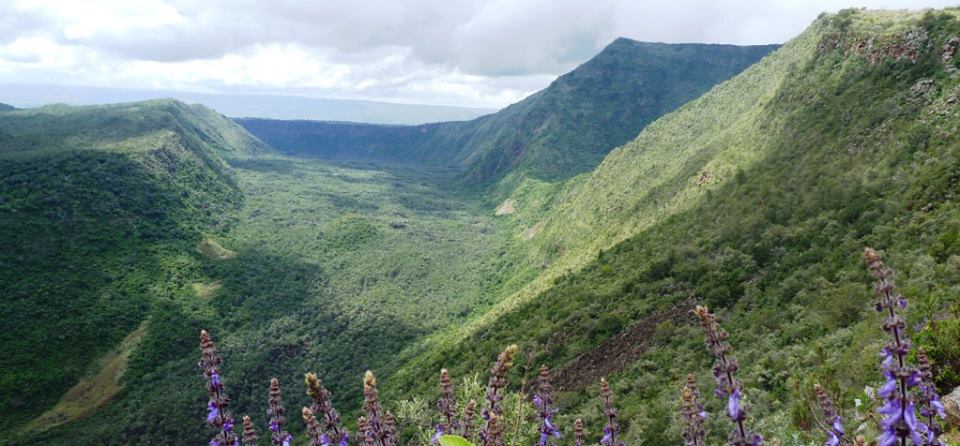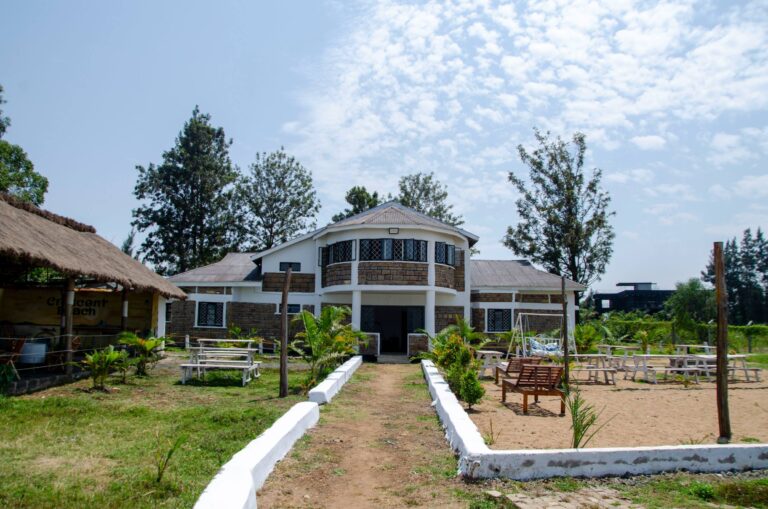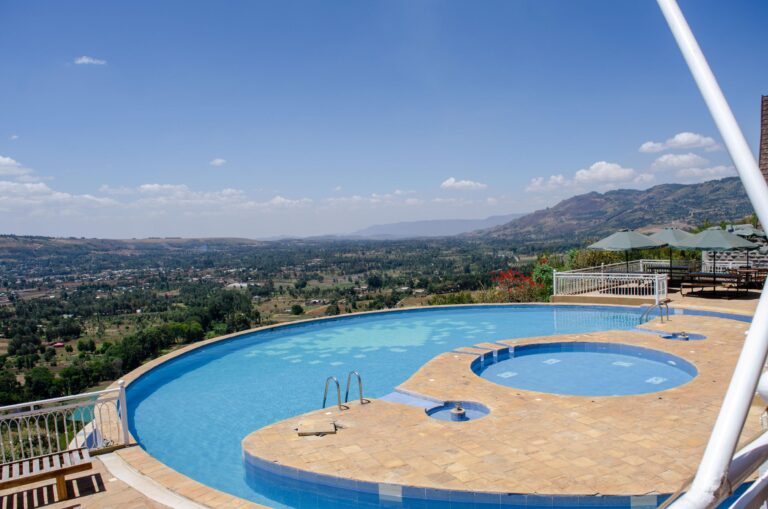Nestled in the heart of Kenya’s Great Rift Valley, Mount Suswa Conservancy is one of the country’s best-kept secrets. This stunning volcanic mountain features a unique double-crater system, breathtaking landscapes, and a network of lava caves, making it an excellent destination for adventure seekers, photographers, and nature lovers. Whether you’re looking for an exciting Mt Suswa hike, an unforgettable Mt Suswa camping experience, or just exploring the Mount Suswa conservancy activities, this destination promises an off-the-beaten-path adventure like no other.
Table of Contents
At Joe Photography and Safaris, we provide guided experiences to ensure that visitors enjoy the best of what Mount Suswa has to offer. This guide highlights everything you need to know, from things to do to the best time to visit and what to carry.
How to Get to Mount Suswa
Mount Suswa is located about 120 km from Nairobi, making it a perfect weekend getaway. The journey takes approximately 3 hours by road. The best way to access the conservancy is through Mai Mahiu – Narok Road, where you’ll take a right turn at Suswa town onto a rugged dirt road leading to the mountain.
A 4×4 vehicle is highly recommended, as the terrain is rough, especially during the rainy season. Public transport is unreliable, so self-drive or booking with a tour operator is the best option.
🏞️ Ready to Conquer New Heights? 🏔️
🚀 Join Joe Photography and Safaris for thrilling hiking adventures across Kenya! Meet new friends, explore breathtaking trails, and create unforgettable memories. 🌿✨
🎒 Join Our Hiking WhatsApp Group 🚀Hikes. Adventures. Friendships. Memories. 🌍
Things to Do in Mount Suswa Conservancy
1. Hiking Mount Suswa
A Mt Suswa hike is one of the most thrilling experiences for adventurers. The hike to the summit takes about 5 to 6 hours round trip, covering a distance of approximately 14 km. The trail offers different levels of difficulty, making it suitable for both beginners and experienced hikers.
Key highlights of the hike include:
- The Outer Crater Rim: Offers panoramic views of the Great Rift Valley and neighboring mountains like Longonot and even Mount Kilimanjaro on clear days.
- The Inner Crater: A deep, forested crater where you might spot zebras, antelopes, and baboons.
- The Summit: Standing at 2,356 meters above sea level, the summit rewards hikers with breathtaking views and cool mountain air.
Hikers should start early in the morning to avoid the afternoon heat. It is also advisable to carry enough water (at least 3 liters per person) and wear comfortable hiking boots for the rugged terrain.
2. Camping on Mount Suswa
For those who love outdoor adventures, Mt Suswa camping is an experience like no other. The conservancy has several designated campsites around the crater rim that provide an excellent vantage point for sunrise and sunset views.
Camping highlights include:
- Star Gazing: The high altitude and clear skies make Mount Suswa one of the best locations for astrophotography.
- Bonfire Nights: Enjoy storytelling and cultural exchanges around a warm bonfire.
- Waking up to Nature: Experience the tranquility of the wild with the sounds of birds and distant wildlife.
Visitors should carry tents, warm sleeping bags, food supplies, and firewood for a comfortable stay. Joe Photography and Safaris provides fully guided camping trips, including all the necessary gear.
3. Exploring the Lava Caves
One of the most unique Mount Suswa conservancy activities is exploring its massive lava caves, formed by ancient volcanic activity. These underground tunnels stretch for several kilometers and are home to thousands of bats.
The most famous cave is the “Baboon Parliament,” where large troops of baboons gather in the evenings. Other caves have unique rock formations and passages, offering a fascinating experience for adventure seekers.
It is essential to carry a flashlight as the caves are completely dark inside. Exploring the caves with a local guide is recommended for safety and better understanding of the formations.
4. Birdwatching and Wildlife Spotting
Mount Suswa is home to diverse wildlife, making it a great spot for photography and nature walks. Visitors can spot:
- Plains wildlife such as zebras, giraffes, and antelopes.
- Predators like hyenas and jackals.
- Baboons and monkeys that inhabit the forested areas.
- Over 200 bird species, including eagles, vultures, and falcons.
Birdwatching is best done early in the morning or late in the afternoon when the birds are most active.
5. Cultural Experiences with the Maasai
Mount Suswa is located within Maasai territory, and visitors can immerse themselves in Maasai culture by visiting local homesteads (Manyattas).
Cultural experiences include:
- Learning about Maasai traditions and customs.
- Participating in traditional dances and storytelling.
- Exploring Maasai beadwork and handicrafts.
Tourists can also hire Maasai guides for hikes and cave explorations, as they have an intimate knowledge of the land.
Best Time to Visit Mount Suswa
The best time to visit Mount Suswa is during the dry seasons, which run from June to October and December to March. The trails are dry and accessible, making hiking and camping easier.
During the rainy season, April to May and November, the roads become muddy and slippery, making access difficult without a 4×4 vehicle.
What to Pack for Your Mount Suswa Trip
- Hiking boots and comfortable clothes for trekking.
- A hat, sunscreen, and sunglasses to protect against the sun.
- Plenty of water (at least 3 liters per person) to stay hydrated.
- A flashlight for exploring the lava caves.
- Warm clothing for the night if camping.
- A camera to capture the beautiful landscapes and wildlife.
Mount Suswa Hiking and Camping Details
- Distance to the summit: 7 km (14 km round trip)
- Crater Rim Distance: 20.74 km
- Highest Elevation: 2,355 meters
- Elevation Gain: 679 meters
- Estimated Time to Run: 3 hours 30 minutes
- Estimated Time to Hike: 7 hours
Campsite Facilities
- Basic long-drop toilets available
- Fire rings for campfires
- Firewood available for purchase
- No water supply – visitors must carry their own water
Mt Suswa Cave Exploration: A Hidden Gem in Kenya’s Rift Valley
Introduction
Nestled within the heart of Kenya’s Great Rift Valley, Mount Suswa Conservancy is a breathtaking destination known for its unique double-crater volcano and diverse landscapes. While the hiking trails and wildlife attract adventurers, one of the most exciting and mysterious aspects of Mt Suswa is its cave system. The Mt Suswa Cave Exploration experience offers a fascinating journey into a world of lava tubes, bat colonies, and cultural significance, making it a must-visit for thrill-seekers, geologists, and nature lovers alike.
The Lava Tube Cave System
Mt Suswa boasts one of the largest and most intricate lava tube cave systems in the world. These caves were formed by flowing lava, which created tunnels beneath the earth’s surface as it cooled. Over time, these tubes collapsed in some sections while remaining intact in others, creating an extensive underground labyrinth perfect for exploration.
The caves are located primarily on the northeastern flank of the mountain and extend for several kilometers. They vary in size, with some being narrow crawl spaces and others being large enough to accommodate groups of visitors.
Key Caves to Explore
1. The Baboon Parliament
One of the most famous caves at Mt Suswa is the Baboon Parliament, a vast underground chamber that serves as a refuge for troops of baboons at night. The name comes from the behavior of these primates, who gather in the cave at dusk, seemingly engaging in an organized assembly before settling in for the night. This rare phenomenon offers a unique opportunity to observe wildlife in an unusual setting.
2. The Bat Cave
Another intriguing cave in the system is the Bat Cave, which houses thousands of insect-eating bats. When exploring this cave, you will see bats hanging upside down from the ceilings, occasionally fluttering as they move around. The Bat Cave is an eerie yet fascinating place that showcases the diversity of life within the lava tubes.
3. The Maze Caves
For experienced cave explorers, Mt Suswa has a network of interconnected tunnels known as the Maze Caves. These caves require careful navigation, as they feature multiple pathways leading in different directions. It is easy to get lost here, so hiring a local guide is highly recommended for safety.
4. The Sacred Caves
Some caves at Mt Suswa hold cultural significance for the local Maasai community. These caves are often used for traditional ceremonies, prayers, and even initiation rites. Visiting these sacred sites provides a deeper understanding of the Maasai’s spiritual connection to the mountain.
What to Expect During Cave Exploration
1. Exciting Underground Adventure
Exploring Mt Suswa’s caves is an adventure unlike any other. Visitors can expect to crawl, climb, and squeeze through tunnels while navigating the underground terrain. Some sections of the caves are pitch dark, requiring headlamps or torches for visibility.
2. Encountering Wildlife
Apart from bats and baboons, explorers may come across hyraxes, owls, and even occasional hyenas that take shelter within the caves. The caves also serve as homes for various insects, including cave crickets and spiders.
3. Stunning Rock Formations
Inside the caves, visitors will see incredible stalactites and stalagmites, lava flow patterns, and unique rock textures formed over thousands of years. The walls of the caves sometimes display minerals and crystallized lava, giving them a glittering appearance.
4. Stories and Legends
The local Maasai guides often share folk tales and legends about the caves. Some believe the caves are connected to deep underground passages that extend for kilometers, possibly linking to other parts of the Rift Valley.
Essential Tips for Cave Exploration
- Wear the Right Gear: Sturdy hiking boots, gloves, and long pants are recommended to protect against sharp rocks and rough surfaces.
- Bring a Torch or Headlamp: The caves are extremely dark, so a reliable light source is essential.
- Go with a Guide: The caves can be confusing and easy to get lost in. A local Maasai guide ensures safety and provides insightful knowledge.
- Carry Water and Snacks: Exploring can be physically demanding, so staying hydrated is important.
- Respect Wildlife and Culture: Avoid disturbing bats and other animals. If visiting sacred caves, follow Maasai cultural guidelines and ask for permission before entering.
Why Choose Joe Photography and Safaris?
- Experienced Guides: Our team has extensive knowledge of Mount Suswa and ensures a safe and enjoyable experience.
- Tailored Packages: We customize trips to fit your preferences, whether for hiking, camping, or photography.
- Photography Services: We capture high-quality moments of your adventure to create lasting memories.
- Affordable Rates: Our tour packages are reasonably priced and offer great value for money.
- Customer Satisfaction: We prioritize excellent service, ensuring our clients have the best experience.
FAQs on Mount Suswa Conservancy
How do I get to Mount Suswa Conservancy?
Mount Suswa Conservancy is located about 50 km from Nairobi along the Mai Mahiu–Narok Road. The best way to get there is by 4×4 vehicle, as the roads leading to the conservancy can be rough. If using public transport, you can take a matatu to Suswa town, then hire a boda boda (motorbike) or arrange for a guide to take you to the conservancy.
What activities can I do at Mount Suswa Conservancy?
There are several exciting activities to enjoy, including:
Hiking to the summit of Mount Suswa
Exploring the lava tube caves, including the famous Baboon Parliament
Camping under the stars with breathtaking Rift Valley views
Wildlife and birdwatching, where you can spot hyenas, leopards, zebras, and various bird species
Cultural interactions with the Maasai community
How much are the entrance and camping fees?
As of recent updates, the charges are:
Conservancy entrance fee: Ksh 500 per person per day
Camping fee: Ksh 500 per person per night
Guide fees: Around Ksh 2,000 per person per day (can be negotiated for groups)
What should I carry when visiting Mount Suswa?
For a successful trip, bring:
Plenty of drinking water and snacks (there are no shops inside the conservancy)
Camping gear if staying overnight (tent, sleeping bag, flashlight, etc.)
Hiking boots and comfortable clothing for rough terrain
A camera or binoculars for capturing wildlife and scenic views
A first-aid kit for minor injuries
A power bank as there is no electricity in the conservancy
Is it safe to visit Mount Suswa Conservancy?
Yes, Mount Suswa Conservancy is generally safe for visitors. However, it is advised to:
Go with a local guide, especially when exploring caves or hiking
Avoid night travel as roads can be challenging in the dark
Beware of wild animals, and avoid leaving food unattended at the campsite
Respect the local Maasai community, especially when visiting cultural sites
Also Read:




